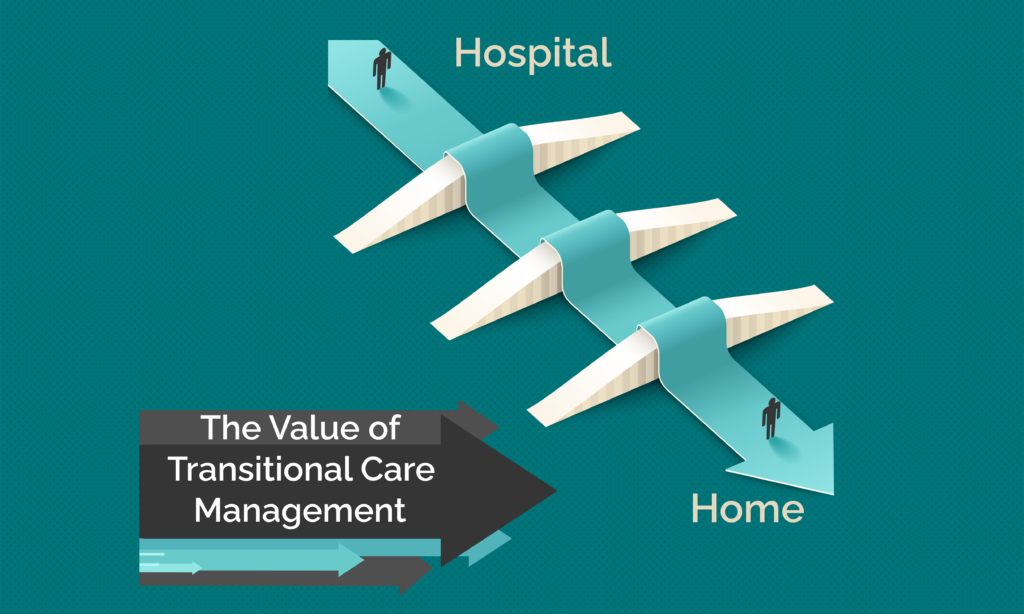Inpatient care plays a key role in diagnosing and treating severe acute illnesses with licensed medical professionals providing care around the clock and patients having easy access to the required medications. Hospitals offer a valuable opportunity to patients in starting appropriate management of their chronic conditions and arresting other health issues through preventive measures. However, inpatient care is expensive, relatively inefficient, and ideally only for a short-term stay. Once the patient’s condition is under control, they will be discharged and the challenge is to ensure that their inpatient care is in sync with their outpatient care.
However, the transition from an inpatient to an outpatient setting like the patient’s home can be confusing for both the patient and their caregivers as they struggle to continue the care and comply with all the care instructions, particularly on medications. For this purpose, the Center for Medicare and Medicaid Services (CMS) has started Transitional Care Management (TCM) to provide patients with a preventive wellness program that addresses the said hand-off period. The transition from the hospital to a community setting like the patient’s home needs to offer a high quality of care that is geared towards the prevention of readmission or further hospitalization.
What is Transitional Care Management?
TCM is a reimbursable and preventive wellness program to ensure patients’ needs are being met as they move from inpatient care to the patient’s community setting. After an inpatient stay, whether it is in a hospital or a skilled nursing facility, the patient may experience a new medical crisis or a change in medication therapy. TCM is in place to ensure the patient stays healthy and reduces the risk of readmission.
TCM fills in the gap in patient care during the transition period. Providers will assist in the medical decision-making, which will be based on several factors like the number of new diagnoses or management options, the complexity of medical records and diagnostics tests, and the risk of possible complications.
TCM Coding
TCM services are reported using two CPT codes:
- 99495 – moderate medical complexity requiring a face-to-face visit within 14 days of discharge
- 99496 – high medical complexity requiring a face-to-face visit within seven days of discharge
Requirements and Components for TCM
- Within two business days of discharge, communicate with the beneficiary or caregiver by phone, email, or in person. Attempts to communicate should continue until successful after the first two attempts.
- Follow-up visits should be scheduled within 7 to 14 days of discharge, depending on the complexity of the medical decision being made. Face-to-face visits are part of the TCM service and should not be reported separately.
- During the face-to-face meeting, medicine reconciliation and management must be provided.
- Review discharge information.
- Identify the need for diagnostic tests/treatments and/or follow up on pending diagnostic tests/treatments.
- Provide education to the beneficiary, family member, caregiver, and/or guardian.
- If necessary, establish or re-establish referrals with community providers and services.
- Schedule follow-up appointments with providers and services, if necessary.
If you have been discharged from any of the following:
- Acute care hospital for inpatients
- Hospital providing long-term acute care
- Nursing facility/skilled nursing facility
- Rehabilitation facility for inpatients
- Partial hospitalization or observation status in a hospital
Who can provide TCM services?
The primary goal of TCM is to ensure that there are no gaps in the patient’s care. As such, the TCM service provider will assist with TCM services, which may be provided by the primary care physician as well as non-physician practitioners (NPPs), who are authorized and qualified to furnish the services in the state they are practicing.
These include:
- nurse practitioners (NPs)
- physician assistants (PAs)
- certified nurse midwives (CNMs)
- clinical nurse specialists (CNSs).
Who qualifies for TCM?
Any Medicare Part B patient can qualify for TCM services if they are discharged from a qualifying service setting like the following:
- Inpatient acute care hospital
- Inpatient psychiatric hospital
- Long-term care hospital
- Nursing home
- Inpatient rehabilitation center
- Hospital outpatient observation/partial hospitalization
In addition, the patient must have a documented medical record indicating that they require additional care from a physician, a non-physician provider, or other clinical staff.
What are the requirements?
The TCM service period runs for 30 days starting on the day the patient is discharged from the acute care setting until the next 29 days. In this period, the billing provider should be able to provide the following 3 components of TCM:
1. Interactive Contact
An interactive contact with the beneficiary and/or caregiver is required by Medicare after 2 business days after the patient’s discharge. This could be conducted by the provider or clinical staff via telephone, email, or in-person, on the condition that the provider can provide timely interactive communication that addresses the patient’s health status and needs. The first two attempts to establish communication should be performed during the aforementioned 2 business days. Further attempts made in a timely manner are still unsuccessful, the provider can bill for the service as long as other TCM criteria are fulfilled.
2. Non-Face-To-Face Services
Medicare requires providers to perform non-face-to-face services unless indicated otherwise. The clinical staff can also perform the following activities under the physician’s supervision:
- Collecting and reviewing patient discharge summaries or other discharge information
- Communicating or coordinating with healthcare professionals and/or care team members who are tasked to provide care and support to the patients
- Providing education to all the care team members involved in the care
- Making referrals and tapping community resources when needed
- Scheduling required follow-ups with the appropriate providers/services
- Identifying and coordinating with the appropriate health agencies, health resources, and community services
- Educating the care team members on supporting patients with self-management, independent living, and ADLs
- Reviewing and supporting compliance to care instructions including medication adherence
- Providing assistance to patients and/or non-clinical care team members in accessing the appropriate care services
3. Office Visits
Medicare requires providers to conduct one in-person visit in a given timeframe. These visits are part of the TCM service and should not be billed separately. Transitional care management CPT code – Medicare utilizes two CPT codes in billing for TCM.
- CPT Code 99495 – TCM services with moderate medical decision complexity (face-to-face visit within 14 days of discharge)
- CPT Code 99496 – TCM services with high medical decision complexity (face-to-face visit within 7 days of discharge)
These billing codes are intended to make TCM appealing for the provider by providing them additional income for activities that improve care transitions.
What are the benefits of TCM for medical providers?
1. Reduced costs with lower readmission rates and Medicare penalties
TCM offers valuable service to patients by improving their health outcomes with the high touch points offered during the crucial transition period. In 2018, as many as 86% of patients have experienced reduced readmissions as compared to those who did not participate in a TCM service. This will help Medicare reduce its cost, particularly for avoidable hospitalizations after discharge.
In addition, providers can utilize TCM to avoid Medicare’s value-based penalties for hospital readmissions within the allotted 30 days from discharge. In its first decade since the Hospital Readmission Reduction Program (HRRP) came to effect in October 2012, Medicare has penalized and cut payments to nearly half of the country’s hospitals. With TCM, providers will avoid paying these penalties while helping their patients improve health outcomes.
2. Additional revenue from reimbursements
In the previous year, the national average for moderately complex care was $175.76 per patient per month, while the rate for high complexity was $237.11. In combination with the reduced costs and avoidance of penalties, providers can also use the transitional care management code to bill for reimbursements. To illustrate, providing moderately complex TCM services for 10 patients in a month can bring to a practice an additional $1,757.60 per month or more than $21,000 per year.
3. TCM can be billed simultaneously with other Medicare programs
Billing providers can bill for TCM services simultaneously with Chronic Care Management (CCM) and Remote Patient Monitoring (RPM), which are two different value-based care models to treat chronic care patients. CCM reimburses care for patients with two or more chronic conditions for managing and coordinating patient care between traditional office visits. RPM reimburses physicians and qualified NPPs for the use of remote devices that capture patients’ vitals and for the one-time set-up and ongoing consultations.
Medicare views the dual reimbursement for one patient as “reasonable and necessary.” It is important to note that some CPT codes may not be reimbursable in the same 30-day period by the same provider who also billed for TCM services especially when the services provided are deemed redundant. These pertain to codes for home health and hospice plan oversight, medication management, and team conferences, to name only a few.
4. Competitive Advantage with increased patient satisfaction and referrals
The improved health outcomes and reduced readmission rates are indicative of a higher quality of care. Payers and patients use these indicators in assessing the quality of the provider. A higher value would naturally be the practice’s competitive advantage that will help them in patient retention and increase referrals.
Utilize TCM Medicare Codes with the right vendor
Navigating the complex requirements of Medicare can prove daunting to many physicians. Oftentimes, many of the billing codes for prevention and care coordination services are underutilized. In these uncertain economic times, practices need to look into the growth of their practice both financially and clinically to continue providing valuable service to their patients, especially the chronically ill.
Ascent Care Partners (ACP) is a physician-owned company offering virtual healthcare services like CCM, RPM, and TCM. These are full-service solutions to aid primary physicians’ practice realize well-deserved income without increased overhead and an upfront cost. As turnkey services, ACP provides support from patient enrollment to preparation of billing charges.



